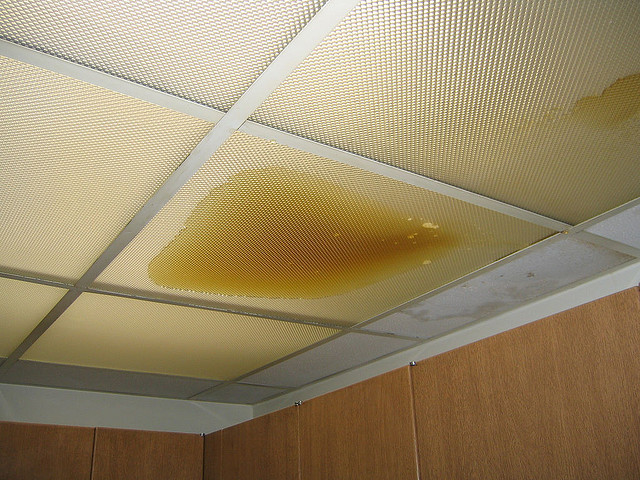How to Check If Your Home Has a Hidden Leak
How to Check If Your Home Has a Hidden Leak
Blog Article
Have you been trying to locate content concerning Locating water leaks?

Early detection of leaking water lines can minimize a prospective calamity. Aside from conserving you cash, it will lessen the irritation as well as frustration. The moment you discover a leakage, calling your plumber for fixings is the best service. Some small water leakages might not be noticeable. If you can not spot it with your naked eyes, here are some hacks that help.
1. Take A Look At the Water Meter
Every home has a water meter. Checking it is a proven manner in which helps you uncover leakages. For starters, turn off all the water sources. Make sure no person will flush, use the faucet, shower, run the cleaning maker or dishwashing machine. From there, go to the meter and also watch if it will certainly transform. Because nobody is using it, there ought to be no motions. That shows a fast-moving leakage if it relocates. Similarly, if you identify no changes, wait a hr or more and examine back once more. This means you may have a slow leak that can even be below ground.
2. Inspect Water Intake
If you find sudden changes, despite your intake being the very same, it indicates that you have leaks in your plumbing system. A sudden spike in your costs shows a fast-moving leak.
Meanwhile, a steady rise monthly, even with the same habits, reveals you have a slow leakage that's also gradually escalating. Call a plumber to extensively check your residential or commercial property, particularly if you really feel a warm area on your flooring with piping underneath.
3. Do a Food Coloring Test
When it comes to water usage, 30% originates from commodes. Test to see if they are running appropriately. Decline flecks of food shade in the container and also wait 10 mins. If the shade in some way infiltrates your dish throughout that time without flushing, there's a leakage in between the storage tank as well as bowl.
4. Asses Exterior Lines
Don't forget to inspect your outdoor water lines also. Must water seep out of the link, you have a loose rubber gasket. One little leak can throw away loads of water and also spike your water costs.
5. Analyze the circumstance and also examine
Home owners should make it a routine to examine under the sink counters as well as also inside cabinets for any bad odor or mold growth. These 2 warnings show a leakage so timely focus is called for. Doing regular inspections, even bi-annually, can conserve you from a major problem.
Examine for discolorations as well as damaging as most appliances as well as pipelines have a life expectancy. If you think leaking water lines in your plumbing system, do not wait for it to rise.
Early discovery of dripping water lines can minimize a potential disaster. Some small water leaks may not be visible. Checking it is a guaranteed method that aids you uncover leakages. One little leakage can lose heaps of water as well as surge your water bill.
If you suspect dripping water lines in your plumbing system, do not wait for it to intensify.
How to Know If Your Home Has a Hidden Leak
Water Meter Reveals Inexplicable Water Usage
If you’d like to test whether or not there’s a leak somewhere in your home, you can do this using your water meter. Here is how to conduct the test:
Don’t use any water in your home for at least 30 minutes; this also means not turning on faucets or water-using appliances.
Go outside, and check your water meter for activity.
If your water meter shows that there was activity, even though no one was using any water, this proves that there is a leak in your home.Visible Mold or Mildew Growth
Leaks behind walls create moist, dark environments that allow mold and mildew to grow and thrive. Eventually, you might see mold growth forming on the wall closest to a hidden leak.
If mold is growing in an area that receives a high amount of moisture, such as a bathroom, it may simply be an indication that better ventilation is needed. However, if you see mold growth on a wall or the ceiling in an area where you would not expect, you probably have a hidden leak.
Musty, Mildew Odor
Sometimes you might not be able to see the mold or mildew that is growing as a result of a leak. However, the smell can give the problem away just as easily. If you catch a whiff of something musty, there’s a good chance that old water is collecting somewhere in your home that you can’t see.
Stained/Warped Walls, Ceilings, or Floors
When your home soaks up water, a variety of red flags can become visible, including ceiling stains, bubbling drywall, warped walls, and sagging floors. While these issues can be caused by excess humidity, they can also be signs that a pipe or plumbing connection has started leaking behind your walls.
Inexplicably High Water Bill
After a while, you get a general sense for what your water bill should be. If you own a pool or sprinkler system, your bill will tend to be higher during summer. However, if you receive a water bill that seems especially high, and you can’t figure out what caused it, then you may have a hidden leak somewhere that’s increasing your bill.
https://www.plumbingjoint.com/blog/2019/july/how-to-know-if-your-home-has-a-hidden-leak/

I ran across that entry about Detecting hidden plumbing leaks while looking around the search engines. Those who enjoyed our blog posting plz remember to pass it around. I thank you for reading our article about Detecting hidden plumbing leaks.
Report this page